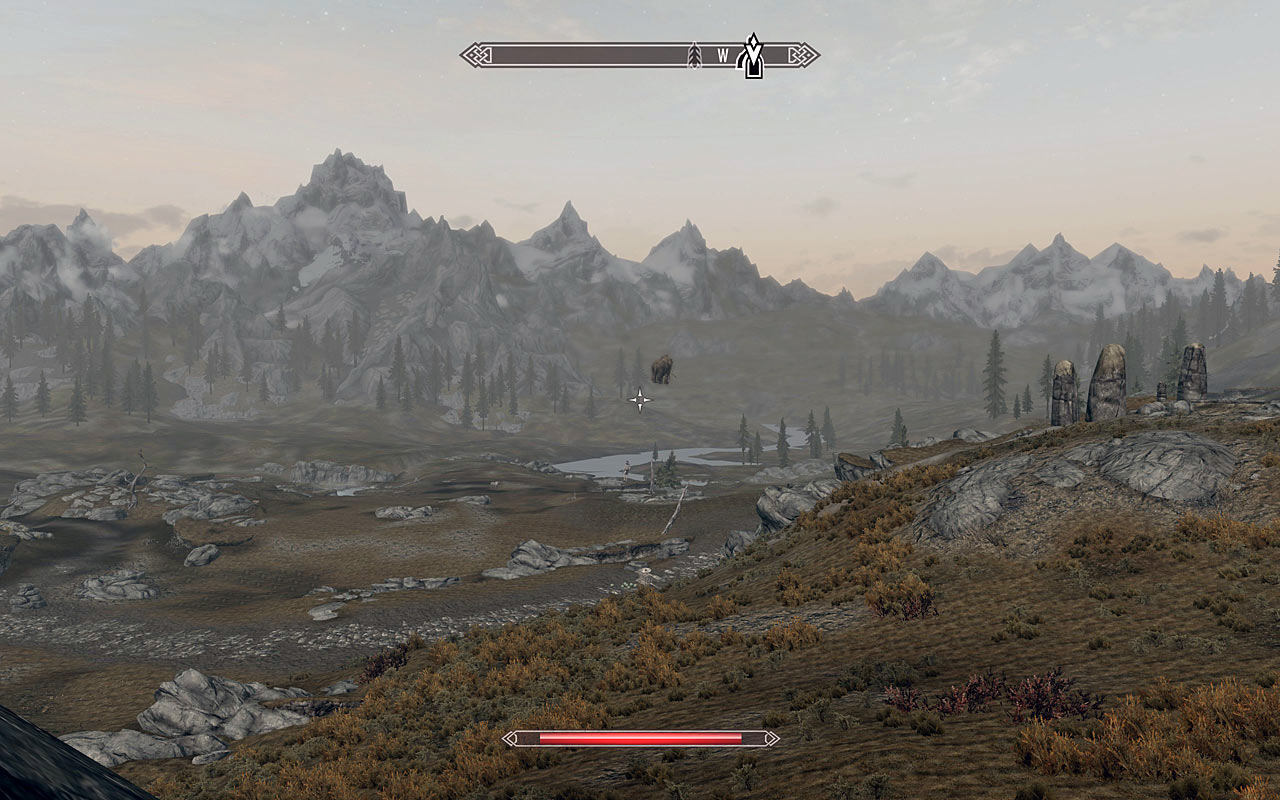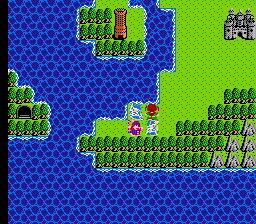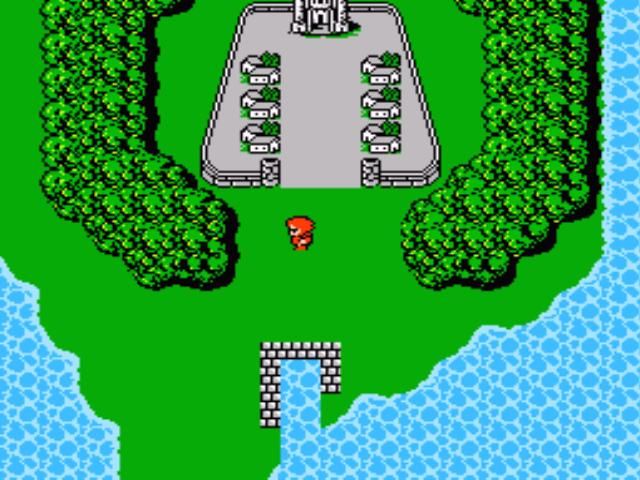Overworld Exploration Implementations - Your thoughts?
Posted: Thu Mar 28, 2013 11:45 pm
Recently I've begun development on my first likely-to-be-completed project of significant scale, and I'm arguing with myself over the best style of overworld map exploration to implement. So far, I've looked at several options, and I figured the fine folks here would have some great insights to chime in with, so here I am.
Here are the implementation types I've thought about:
1) Zelda-esque: The world map is divided into relatively compact segments, usually such that each segment matches the game resolution, with rare, "special" segments which are larger and scroll, such as areas intended to feel awe-inspiring ("Holy shit, the Giant Temple of Awesome won't FIT on this GAMEBOY screen!").
This method has some benefits - most entities other than the player are confined to a single segment, keeping calculations to a minimum and ensuring that entities are easily manageable for both the programmer and the player. Also, the heavy segmentation helps keep the gameplay feeling purposeful for the player. Instead of wandering, they have specific tasks to focus on in each segment – kill the octoroks, break the cracked wall, open that door, solve that puzzle, talk to that girl, etc.
The good aspects of this implementation (especially the ease of hardware efficiency) have made it stand the tests of time. For example, even as Zelda games progressed to seamless overworlds, they remained carefully segmented. Wind Waker took this to the extreme, with most core gameplay corralled into island locations in a massive (and tedious, and irritating) ocean.
The largest drawback of this overworld style is the lack of freedom the player can experience if you fuck it up. If done wrong, this style of overworld will feel restrictive and cramped to the player, especially if you overdo the Metroidvania trend until players can't open fence gates without the Gloves of Mysterious Gate Opening. Another big drawback is that it becomes difficult to keep the gameplay fluid with frequent segment transitions. This problem is easiest to manage when your segments don't incur any load times, but even then the segment transitions have to be expertly built to feel natural and not like a video stopping to buffer every ten seconds. It's also difficult to make this work for combat-heavy gameplay, as nothing ruins an undead-slaying rampage like interruptions.
2) Skyrim/Minecraft-esque: Total seamlessness in the overworld. While the world style can be (more or less) identical to the previous style's, the presentation varies greatly. The often resolution-sized "chunks" of the game world now scroll seamlessly under the camera without transitions. Entities can move from chunk to chunk, which can mean smooth combat or, alternately, running from a frost troll for thirty miles until you find a cave or shack or some shit.
This world type, naturally, necessitates much more robust entity and script management and optimization, but allows the player much more perceived freedom. "I'm not in a series of boxes, you fiend! I can just run the fuck over here! Or over here! Fus Ro Da, bitch!" This method tends to produce much more expansive game worlds, though care must be taken not to produce a largely empty, if scenic, space for the player.
While this world type provides luxurious fluidity of gameplay and unbroken combat sequences, it presents its own difficulties. The player has to understand that this puzzle is only relevant to this area, and not that spot way over there. You better make sure the puzzles look different if they aren't part of the same objective! Oh, and the player will need a map, compass, etc., or he'll never know where the Hell he is. And he'll need a robust quest log, or he might lose track of what he should be doing to move forward. Etc. etc.
3) Many Oldschool RPGs-esque: The world map is scaled down, showing the player, mountains, towns, etc. at similar sizes. A popular trade route is one tile wide, as is a mountain pass or a river. Walk a few tiles to the next town, if you aren't ambushed and dragged into the completely disjointed battle arena with props vaguely based on the terrain around you (that isn't to say this can't be done well, just that it's a tricky balance).
With this type of implementation, the overworld is more or less a hub level with limited gameplay, connecting all the game's actual areas with an explanatory graphic. The only genuine difference between this world type and that of Super Mario World is that the player can freely explore in all directions (and find secrets!), instead of being restricted to waypoints along a rigid path. The player is free to explore the game world to his heart's desire, but the world is artificially shrunk, in essence, to make his exploration more manageable and short-timed.
This implementation affords a useful balance between player freedom and efficiency, keeping the world open but giving only important areas fine-grain details and keeping core gameplay confined (mostly) to them. The only real drawback to this implementation is that the game world may feel less expansive and rich (unless done really well) than a purely seamless world. Whether or not this type is a good idea is really a matter of preference and the desired gameplay style.
At the moment, I'm leaning toward methods 1 & 3, largely 3, but I'm wondering if you guys might have some insight on this as I'm sure there are key details I'm missing. So! After all the wall o' text funness is over:
What kind of overworld or world map do you like best?
What kind do you typically use, and why?
Do you know of any styles I've left out? Can you give some insight on those?
Do you notice any key details I've missed?
Etc...
I'm not looking so much for specific opinions as to what will suit my game (hence the lack of descriptive details regarding it), more just wanting to discuss the issue generically. Thanks for any thought/replies!
Here are the implementation types I've thought about:
1) Zelda-esque: The world map is divided into relatively compact segments, usually such that each segment matches the game resolution, with rare, "special" segments which are larger and scroll, such as areas intended to feel awe-inspiring ("Holy shit, the Giant Temple of Awesome won't FIT on this GAMEBOY screen!").
This method has some benefits - most entities other than the player are confined to a single segment, keeping calculations to a minimum and ensuring that entities are easily manageable for both the programmer and the player. Also, the heavy segmentation helps keep the gameplay feeling purposeful for the player. Instead of wandering, they have specific tasks to focus on in each segment – kill the octoroks, break the cracked wall, open that door, solve that puzzle, talk to that girl, etc.
The good aspects of this implementation (especially the ease of hardware efficiency) have made it stand the tests of time. For example, even as Zelda games progressed to seamless overworlds, they remained carefully segmented. Wind Waker took this to the extreme, with most core gameplay corralled into island locations in a massive (and tedious, and irritating) ocean.
The largest drawback of this overworld style is the lack of freedom the player can experience if you fuck it up. If done wrong, this style of overworld will feel restrictive and cramped to the player, especially if you overdo the Metroidvania trend until players can't open fence gates without the Gloves of Mysterious Gate Opening. Another big drawback is that it becomes difficult to keep the gameplay fluid with frequent segment transitions. This problem is easiest to manage when your segments don't incur any load times, but even then the segment transitions have to be expertly built to feel natural and not like a video stopping to buffer every ten seconds. It's also difficult to make this work for combat-heavy gameplay, as nothing ruins an undead-slaying rampage like interruptions.
2) Skyrim/Minecraft-esque: Total seamlessness in the overworld. While the world style can be (more or less) identical to the previous style's, the presentation varies greatly. The often resolution-sized "chunks" of the game world now scroll seamlessly under the camera without transitions. Entities can move from chunk to chunk, which can mean smooth combat or, alternately, running from a frost troll for thirty miles until you find a cave or shack or some shit.
This world type, naturally, necessitates much more robust entity and script management and optimization, but allows the player much more perceived freedom. "I'm not in a series of boxes, you fiend! I can just run the fuck over here! Or over here! Fus Ro Da, bitch!" This method tends to produce much more expansive game worlds, though care must be taken not to produce a largely empty, if scenic, space for the player.
While this world type provides luxurious fluidity of gameplay and unbroken combat sequences, it presents its own difficulties. The player has to understand that this puzzle is only relevant to this area, and not that spot way over there. You better make sure the puzzles look different if they aren't part of the same objective! Oh, and the player will need a map, compass, etc., or he'll never know where the Hell he is. And he'll need a robust quest log, or he might lose track of what he should be doing to move forward. Etc. etc.
3) Many Oldschool RPGs-esque: The world map is scaled down, showing the player, mountains, towns, etc. at similar sizes. A popular trade route is one tile wide, as is a mountain pass or a river. Walk a few tiles to the next town, if you aren't ambushed and dragged into the completely disjointed battle arena with props vaguely based on the terrain around you (that isn't to say this can't be done well, just that it's a tricky balance).
With this type of implementation, the overworld is more or less a hub level with limited gameplay, connecting all the game's actual areas with an explanatory graphic. The only genuine difference between this world type and that of Super Mario World is that the player can freely explore in all directions (and find secrets!), instead of being restricted to waypoints along a rigid path. The player is free to explore the game world to his heart's desire, but the world is artificially shrunk, in essence, to make his exploration more manageable and short-timed.
This implementation affords a useful balance between player freedom and efficiency, keeping the world open but giving only important areas fine-grain details and keeping core gameplay confined (mostly) to them. The only real drawback to this implementation is that the game world may feel less expansive and rich (unless done really well) than a purely seamless world. Whether or not this type is a good idea is really a matter of preference and the desired gameplay style.
At the moment, I'm leaning toward methods 1 & 3, largely 3, but I'm wondering if you guys might have some insight on this as I'm sure there are key details I'm missing. So! After all the wall o' text funness is over:
What kind of overworld or world map do you like best?
What kind do you typically use, and why?
Do you know of any styles I've left out? Can you give some insight on those?
Do you notice any key details I've missed?
Etc...
I'm not looking so much for specific opinions as to what will suit my game (hence the lack of descriptive details regarding it), more just wanting to discuss the issue generically. Thanks for any thought/replies!




 (A Chunk)
(A Chunk) (Some Chunks)
(Some Chunks)



